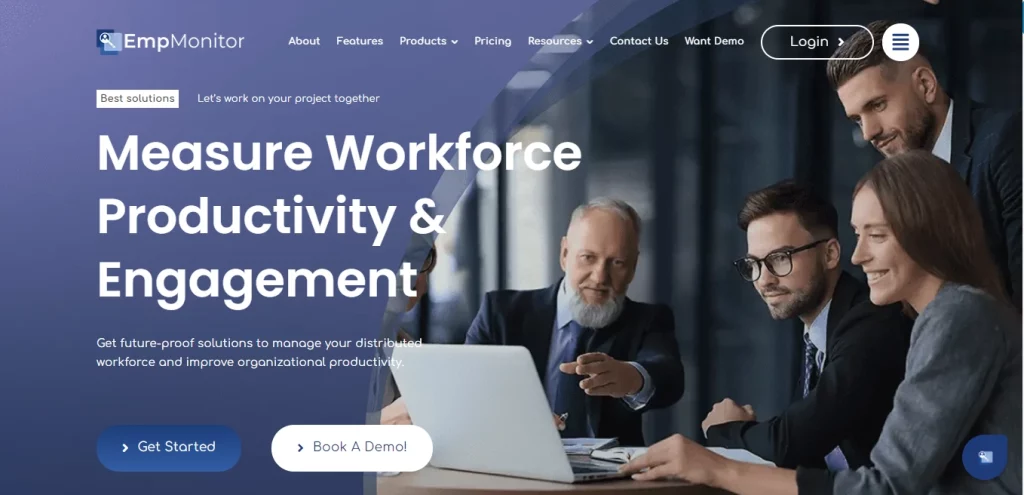Feedback, whether it was a friendly fist bump, a tap on the shoulder, or a standing ovation, is without a question one of the most effective ways to figure out whether we are doing something well or choosing the wrong path. Since we are all packed in our homes, feedback culture has taken a step back. Many team leaders and team members are required to stay away from the workplace at all times. But is it really not possible to practice giving feedback to remote workers?
Yes, of course. A good feedback culture values input and uses it to help people, teams, and the company improve and assists them in knowing their full potential. Being said that, creating a feedback culture for managing remote workers is not something that can happen in the blink of an eye.
So, how can you increase the performance of remote workers by fostering a stronger feedback culture? To master remote feedback, follow these seven steps:
1- Foster a growth mindset:
Nurturing a growth mindset mandates carrying on and overcoming challenging tasks. And this approach is valued in strong feedback cultures. Learning and growth are crucial to people that have a growth mindset, and they see feedback aas a chance to improve. Therefore, here are a few ways to foster a growth mentality in your organization:
- Include the criteria in your hiring process- When you hire remote workers, you need to ensure they have the right mentality. Whether people regard mistakes as a warning that they will fail or as an opportunity to grow. Does undertaking tasks that they find simple boost their confidence? What are their strategies for dealing with failures? Make these questions a requirement during the hiring process.
- Recognize growing and getting better- You need to upgrade yourself if you think an impactful output is the only reason for any recognition. Every effort counts- and with that in mind, recognizing employees who engage in their own development on a regular basis.
- Lead with exposure & vulnerability- Strong leaders recognize their flaws and display an enthusiastic attitude to accept and learn from criticism. Make it clear where the company and its leadership can improve.
2- Provide feedback training:
Before we get into the whole feedback training, what according to you, is feedback? Well! Many people do not realize that feedback is not simply about pleasant verbal conversations. It is a process in which we are supposed to be transparent and honest about our thoughts about a specific colleague, in which unfavourable comments also count.
However, there has to be an appropriate way- how you give and receive feedback. And keeping that in mind; Provide training and tools to your staff to help them develop a feedback culture.
- You can demonstrate positive and terrible feedback exchanges using videos or by practicing it with employees to view instances.
- Giving negative feedback does not mean you have to be rude. You can teach your employees how to share negative criticism effectively.
- Employees should be taught to ask questions, look for examples, and clarify meaning.
- Train employees on how to receive feedback.
- Develop management abilities in establishing staff development objectives and assisting them in achieving such goals.
3- Track What People Are Doing:
You might be wondering how you can keep track of what your employees do week to week. Well! There are tons of solutions out there on the internet, but which one will suit you the best. You will need a solution that can help you monitor your employees with their projects, active hours, and many more. So, which tool is the best fit for you?
EmpMonitor is the solution you need. EmpMonitor is the most comprehensive and sophisticated employee monitoring software available, allowing businesses to monitor their employees’ computer usage and other digital activities during working hours. And most importantly, it will assist you in managing remote workers.
Productivity assessment, time tracking, online timesheets, user logs, screenshots, reports, and many more features are included in the platform. When your employees turn on their systems, EmpMonitor begins recording all their activity until they shut off their working system. It gives you all the information you need and delivers detailed reports for each employee depending on the parameters you provide.
Once you implement this software in your company, you can seamlessly figure out what sort of feedback one requires. This will make training and providing meaningful feedback to your staff easier.
4- Create a schedule of events:
Create a schedule that includes all-hands meetings, virtual meetings, one-on-ones, town halls, and other types of activities. You must ensure the calendar is set for at least three months, or it can be for a year. Meetings and activities can help teams working from home feel more connected to their coworkers. This way, you can make sure the feedback session never misses out.
Remote employees might also work over emotions of loneliness and isolation by knowing the specific day and location where they will meet other workers.
5- Build Trust:
When moving to a faraway culture, the demand for trust becomes even more for remote workers. Remote working is a splendid setting for assessing trust levels and for increasing and building trust. It is all about their faith in you. The more you demonstrate trust and follow the standards your team set, the more trust you will gain. Also, consider the following to get more exposure on building trust:
Constructive Feedback– Feedback from your team can assist you to understand how to keep them motivated and where challenges may arise as a leader. Request candid feedback and welcome any formative criticism that comes your way. This way your team will trust you for all the quality feedback you offer and work on it.
Responsiveness – Your employees rely on you. Getting back to them as soon as possible to resolve their concerns or work-related issues will build trust.
Relationship Investment – It was a lot easier to strike a conversation prior to covid. But for remote workers, it gets kind of difficult to set out one-on-one talks. However, a ten-minute check-in with the team is possible. Yet it is crucial to engage with your team at least once a week if at all feasible. You do not have to talk about work all of the time, but make sure you address any job-related hardships.
Psychological Safety – Your employees want to be able to openly voice their thoughts and contribute without fear of being judged, harmed, or having negative consequences.
6- Celebrate Successes and Champion Attempts:
We all understand the importance of recognizing and celebrating one another’s efforts and victories. Constructive feedback is most effective in cultures that value their employees’ contributions. Whether you plan gifts for remote workers or just appreciate them with pleasant words, every team meeting should include some time for celebration, and do not forget to celebrate achievement on ongoing initiatives.
If employees get to know about how much you respect their work, they are considerably more likely to respond favourably to critical comments. Constructive feedback, on the other hand, will be more discouraging to individuals who work in situations where people never recognize their efforts.
Your words of encouragement matter a lot. Even if a project fails, take a minute to recognize the hard work that went into it, underline what you learned, and appreciate the team that gave it all.
Also Read:
FOSTER CROSS-FUNCTIONAL COLLABORATION WITH THE BEST TRACKING SOFTWARE
5 SMART TIPS TO IMPROVE WORKPLACE COLLABORATION SKILLS
21 POWERFUL EMPLOYEE FEEDBACK EXAMPLES TO BOOST MORALE AND PRODUCTIVITY
Supercharge Your Remote Workers
Every company needs to exchange feedback. However, if not done correctly and appropriately, it might backfire. To avoid misunderstandings, communication with remote workers should be concise and straightforward. The tips mentioned in the blog will help you conduct successful feedback sessions and address your questions about how to manage remote workers.
Focus on following up with positive, quantifiable action after receiving feedback. Remember that the goal of feedback is to develop the person and the firm as a whole! And we must all put forth the effort to make it happen.














